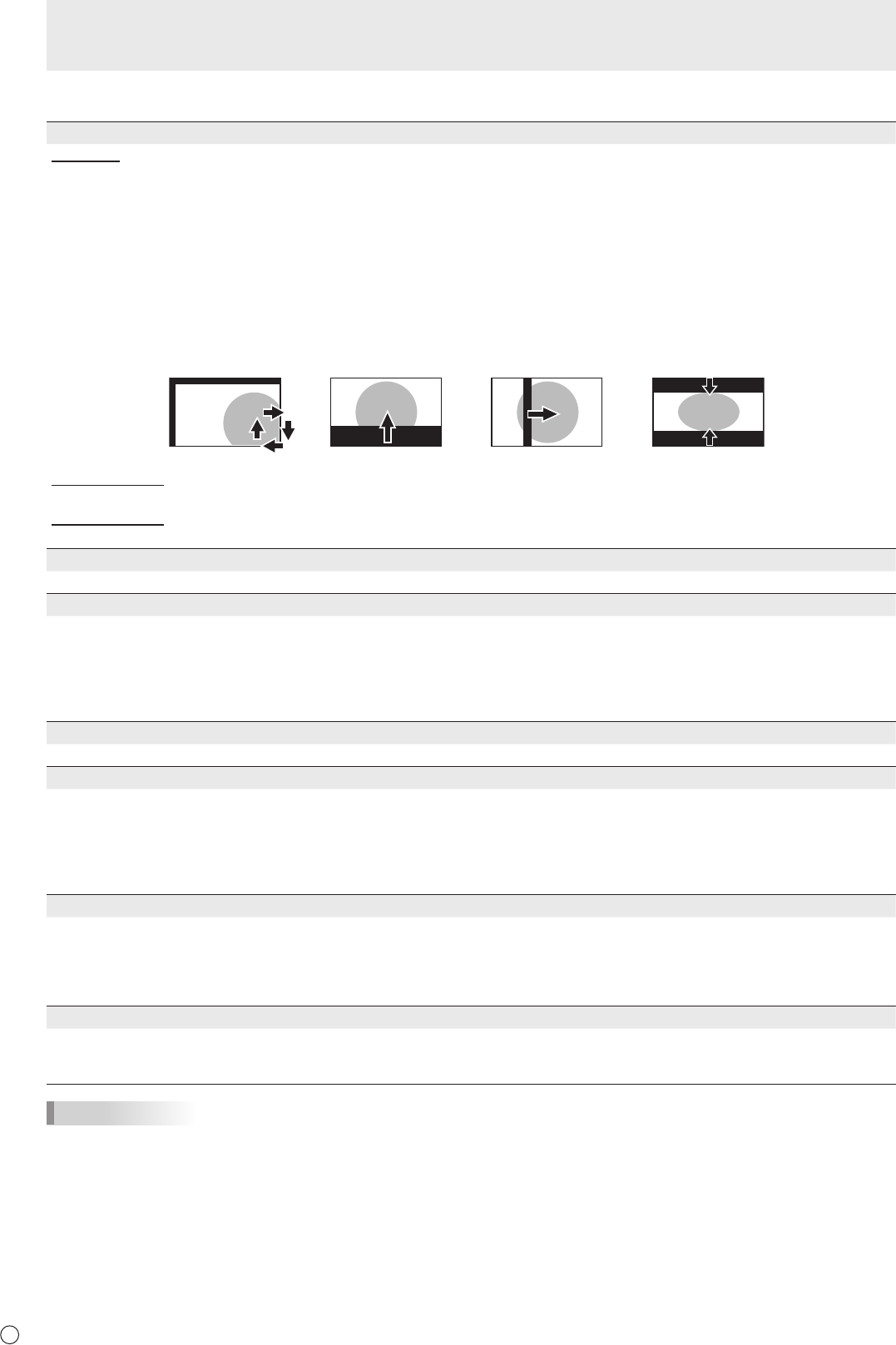
Menu Items
n
OTHERS
SCREEN MOTION
PATTERN
Residual images are reduced by moving the screen.
OFF ................. SCREEN MOTION function is disabled.
PATTERN1 ...... The whole screen moves vertically and horizontally.
PATTERN2 ...... A black screen spreads from the bottom of the screen and then shrinks to the bottom of the screen. If the
monitor is installed in the portrait orientation, a black screen spreads from the left end of the screen and then
shrinks to the left end of the screen.
PATTERN3 ...... A black bar moves from the left end to the right end of the screen. If the monitor is installed in the portrait
orientation, a black bar moves from the top to the bottom of the screen.
PATTERN4 ...... Black screens appear from both the top and bottom of the screen, and the displayed image is compressed
into the central eld. If the monitor is installed in the portrait orientation, the screen is compressed from the
left and right ends.
PATTERN1 PATTERN2
PATTERN4PATTERN3
MOTION TIME 1
Specify a time period (operating interval) until SCREEN MOTION starts.
MOTION TIME 2
Specify a time period during which SCREEN MOTION operates (time period during which the screen will move).
POWER MANAGEMENT
POWER MANAGEMENT determines whether or not to switch modes from no signal to the input signal standby mode.
AUTO INPUT CHANGE
Specify whether to change inputs automatically. When ON is selected and no signal is present in the selected input mode,
AUTO INPUT CHANGE automatically changes the selected mode to another mode where a video signal is present.
When video signals exist in multiple input modes, the switching priority is as follows:
DVI-I, DisplayPort, HDMI1, HDMI2, D-SUB
(Input mode switching may take 15 seconds or more, depending on the connected equipment. Input signals may not be
detected properly and a priority may change, depending on the connected equipment or video signals.)
LOGO SCREEN
Sets whether or not to display the logo screen.
INPUT SIGNAL (D-SUB[RGB]/DVI-I (analog))
If a computer connected to the D-SUB[RGB]/DVI-I (analog) outputs any of the following resolutions, make a selection from the
following options.
480 LINES .......... AUTO, 640x480 or 848x480
768 LINES ..........AUTO, 1024x768, 1280x768, or 1360x768
1050 LINES ........1400x1050 or 1680x1050
ZOOM2 SPECIAL SETTING (See page 29.)
SCAN MODE (AV input)
Sets the scan mode used for AV mode input.
MODE1 ............... Over-scan display
MODE2 ...............Under-scan display
MODE3 ............... Under-scan display when the input signal is 1080i/p. Otherwise, over-scan display
*
Even when MODE1 is selected, under-scan display is used when the input signal is 1080i/p and the screen size is Dot by Dot.
COLOR SYSTEM (D-SUB[VIDEO])
Select the color system of the AV equipment which is connected to PC/AV D-sub input terminal. (AUTO / PAL / PAL-60 /
SECAM / NTSC3.58 / NTSC4.43)
When AUTO is selected, the color system is automatically set according to the input signal.
TIPS
• When WHITE BALANCE is set to THRU, BLACK LEVEL, CONTRAST, TINT, COLORS, RGB INPUT RANGE, GAMMA and
COPY TO USER cannot be set.
• If COLOR MODE is set to sRGB, the following items cannot be set.
WHITE BALANCE, PRESET, USER, COPY TO USER, and GAMMA
• When the COLOR MODE is set to VIVID or HIGH ILLUMINANCE, GAMMA can not be adjusted.
• STANDBY MODE cannot be set to LOW POWER when SCHEDULE is effective.
• When displaying the color pattern, it is possible to adjust certain items of the PICTURE menu.
Non-adjustable items cannot be selected.
Audio input from the HDMI input terminal is also not output.
